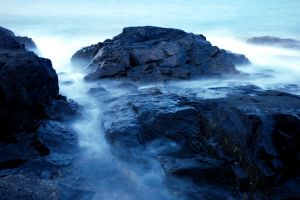but keep in mind that it is more akin to negative film than transparency film and I personally find that I can safely get another stop to a stop-and-a-half in post-shoot processing. Shoot RAW, not jpeg! As far as exposure, keep your histogram as far to the right as possible without clipping (going off the edge). If you loose your highlights (which are on the right hand side of the histogram) you probably can’t get them back. I guess in that way a digital file is like transparency film.

I am not a big user of on-camera flash, but it can be a real life-saver. I suggest a good starting point is to set your flash to under expose by two-thirds of a stop. That can help bring out details without overpowering the image…and looking like you used on-camera flash! If you do use on-camera flash it is generally a good idea to bounce it or at least put some sort of diffuser over it.
Use movement to your advantage
Another thing to keep in mind is that a little movement in your image isn’t necessarily an image killer. Sometimes you can make it work to your advantage. A year ago I was shooting in the train station in Mumbai, India. The station is indoors and while it wasn’t exactly gloomy, it still qualifies as low light. I put the camera over my head as high as I could hold it and fired off a half-dozen frames at an eighth of a second. I only shot six frames because at that point a machine gun carrying police officer politely but firmly informed me that photography in the train station was forbidden. That image, in which everything has movement, even the lamp posts, has already sold a number of times as a stock picture with Getty Images (1377). Sometimes movement can make an image more dynamic and help it convey a mood or message.
Guest post by John Lund Stock
Need a venue for your photography shoot, the consider Send Business Centre Meeting Rooms near London. We have meeting rooms and offices for hire on an hourly to monthly basis. We even offer your first meeting room free.



[…] Source and Read More: pswish.com […]
Cool tips, thx
[…] Source and Read More: pswish.com […]
thank y
how to download it? :S:S
[…] the photo will result in shading and distortion of the features as well as the colors of the face. If you are shooting your photo indoors, be sure to use an indirect form of lighting this will brighten the room without the effects of […]
Wonderful items from you, man. I have take into account your stuff previous to and you’re just too magnificent. I actually like what you have got right here, really like what you are stating and the best way by which you assert it. You make it entertaining and you continue to care for to keep it sensible. I can not wait to learn far more from you. This is actually a great web site.